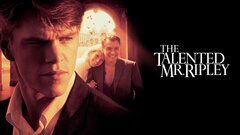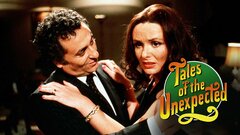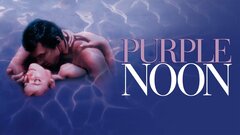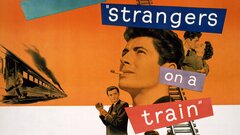Patricia Highsmith

Writer
Birth Name: Mary Patricia Plangman
Birth Date: January 19, 1921
Death Date: February 4, 1995 — 74 years old
Birth Place: Fort Worth, Texas
Known primarily for her debut novel, Strangers on a Train, and her most famous literary creation, Tom Ripley, author Patricia Highsmith crafted literate psychological character studies couched within the framework of a traditional crime thriller. After graduating from college, Highsmith fell into a freelance career as a writer for comic books and periodically published short stories in periodicals such as Ellery Queen Mystery Magazine.
Alfred Hitchcock's "Strangers on a Train" (1951), an adaptation of her first novel, became an instant classic and served to establish Highsmith as an author of intricately plotted thrillers. A difficult and solitary person, she eventually expatriated to Europe, where her works enjoyed greater success and critical appreciation than they did in the U.S.
With her fourth novel, The Talented Mr. Ripley, Highsmith gave birth to her first and only recurring character, the anti-hero without a conscience and a taste for the finer things in life, Tom Ripley. The ongoing Ripley saga would be adapted to film dozens of times, most notably in Anthony Minghella's "The Talented Mr. Ripley" (1999).
With a body of work encompassing 22 novels and eight short story collections which drew literary comparisons to Albert Camus and Joseph Conrad, Highsmith was one of the more respected, yet under-recognized writers of 20th-century American fiction.
Born Mary Patricia Plangman on Jan. 19, 1921 in Fort Worth, TX, she was the daughter of commercial artists Jay B. Plangman and Mary Coates. After her mother divorced Plangman while still pregnant, Highsmith was born at her maternal grandmother's boarding house. In 1924, Coates married another artist, Stanley Highsmith, who adopted Mary Patricia and moved the family to New York City three years later.
At the age of 12, she was sent back to Fort Worth for a year to live with her grandmother. Highsmith would later describe this period as the loneliest of her young life, although she did find a modicum of solace in her grandmother's vast reading library. Having been instilled with a love of the written word at an early age, Highsmith discovered Karl Menniger's The Human Mind - a clinical study of mental disorders, such as pyromania and schizophrenia - at the age of eight.
The book would prove to be greatly influential in her later work as an author. Highsmith eventually returned to New York and her family; however, her lingering feelings of betrayal and abandonment by her mother increasingly strained an already difficult relationship. After graduating from Barnard College in 1942, where she had studied Latin languages and English literature, she began working as a writer for several comic book publishers.
Although Highsmith never married or had children, she did engage in many affairs, sometimes with men, although more often with women. She was a solitary, hard-drinking person who acquaintances of both sexes by and large described as difficult; to the point of cruelty at times. At the suggestion of Truman Capote, Highsmith traveled in 1950 to Yaddo, a writers' colony in Sarasota, NY, to rework her first novel, Strangers on a Train.
By the time director Alfred Hitchcock adapted Highsmith's book into a highly successful feature film one year later, her reputation as a novelist of dark, psychological thrillers had been firmly established. Her second novel The Price of Salt, written under the pseudonym Claire Morgan, was an unabashed lesbian romance - the first in the genre to grant its protagonists with a happy ending. Although much more latently expressed, Highsmith's future works would frequently contain homosexual undercurrents and subtexts.
Such was the case with her most well-known character, Tom Ripley, the anti-hero of the psychological thriller The Talented Mr. Ripley. The tale of a young sociopath who first covets, then assumes, the privileged lifestyle of a rich friend - a lifestyle Ripley will literally kill to maintain - the book would be the first in a series of five novels featuring the remorseless protagonist. Time and again Highsmith returned to deeply flawed, morally compromised characters who, usually due to their own actions, are forced to extricate themselves from dire situations.
Not surprisingly, she cited writers like Kafka and Dostoevsky as major influences.
Even with the notoriety she gained from Hitchcock's film, Highsmith's novels sold only moderately well in North America. Conversely, she enjoyed great success in European countries, where literary critics regarded her - and other underappreciated U.S. "pulp" writers like David Goodis - as a nuanced author of intense psychological fiction. This difference in critical perception could have, in part, explained Highsmith's relocation to Europe in the early 1960s.
Beyond "Strangers on a Train," many of her novels were adapted to film over the years. "The American Friend" (1977), directed by Wim Wenders and starring Dennis Hopper as Tom Ripley, interpreted the events in the 1974 novel Ripley's Game. The highest profile film version of her first entry in the series came with writer-director Anthony Minghella's "The Talented Mr. Ripley" (1999), which cast Matt Damon as the titular anti-hero.
The French-produced "The Cry of the Owl" (2010), starring Paddy Considine, Scott Speedman, and Julia Stiles, was the second film based on the novel of the same name. After a career that spanned 22 novels and eight short story collections, Highsmith died of leukemia in Locarno, Switzerland on Feb. 4, 1995. She was 74 years old. By Bryce P. Coleman
Credits

Ripley's Game

The Talented Mr. RipleyStream

Strangers on a Train

Eaux profondes

Tales of the UnexpectedStream

Armchair Thriller

Purple NoonStream



